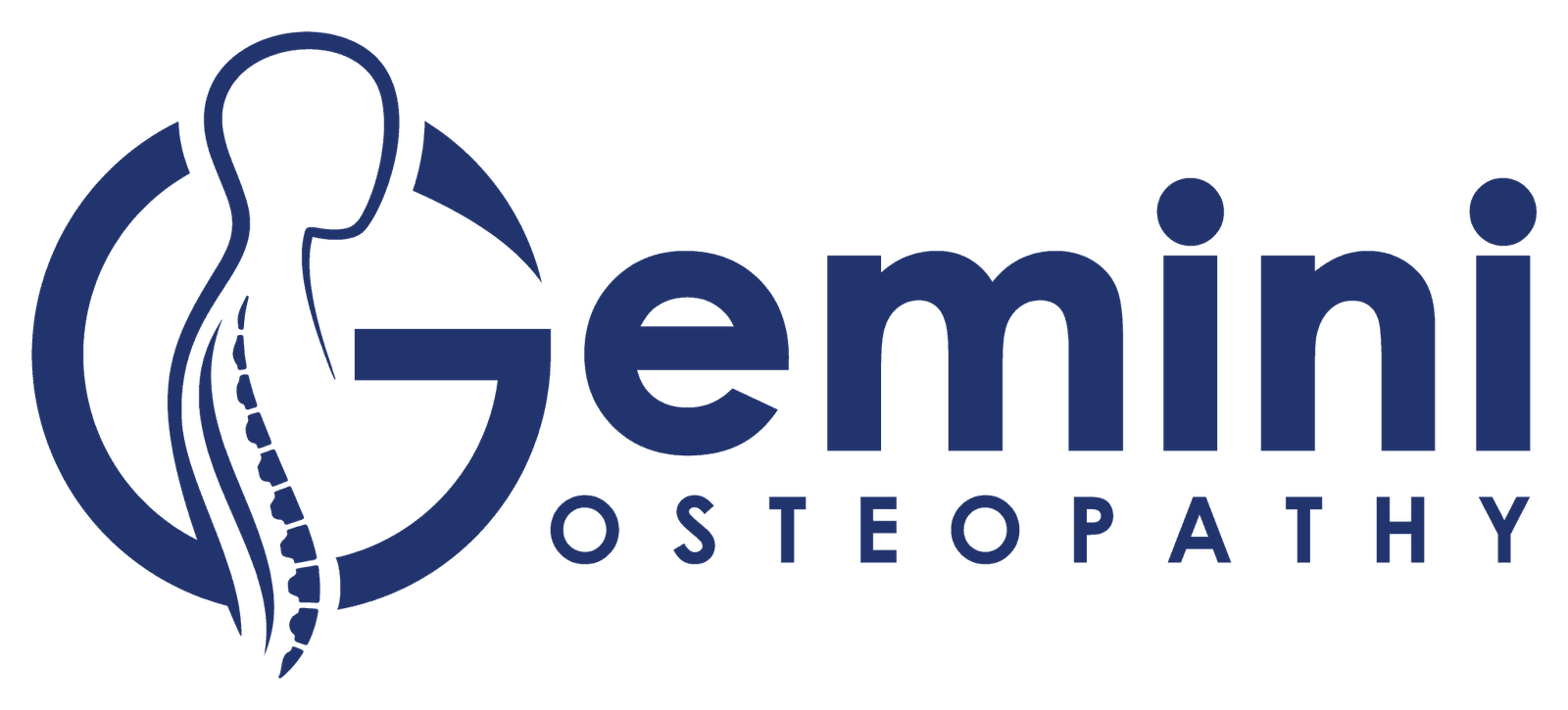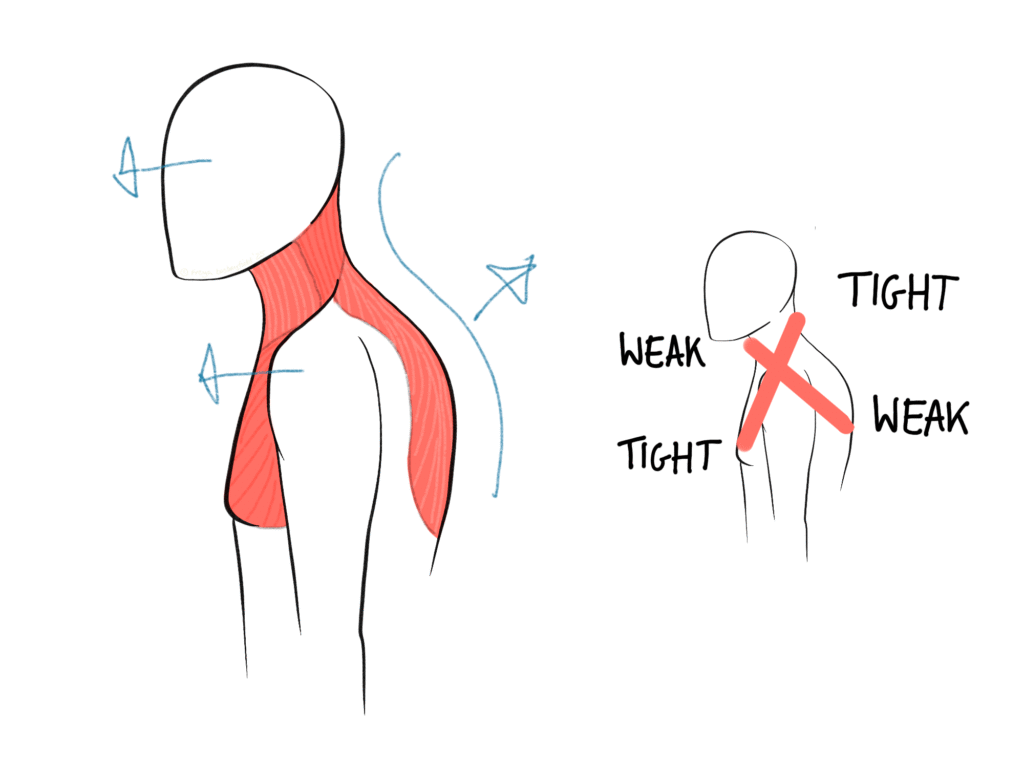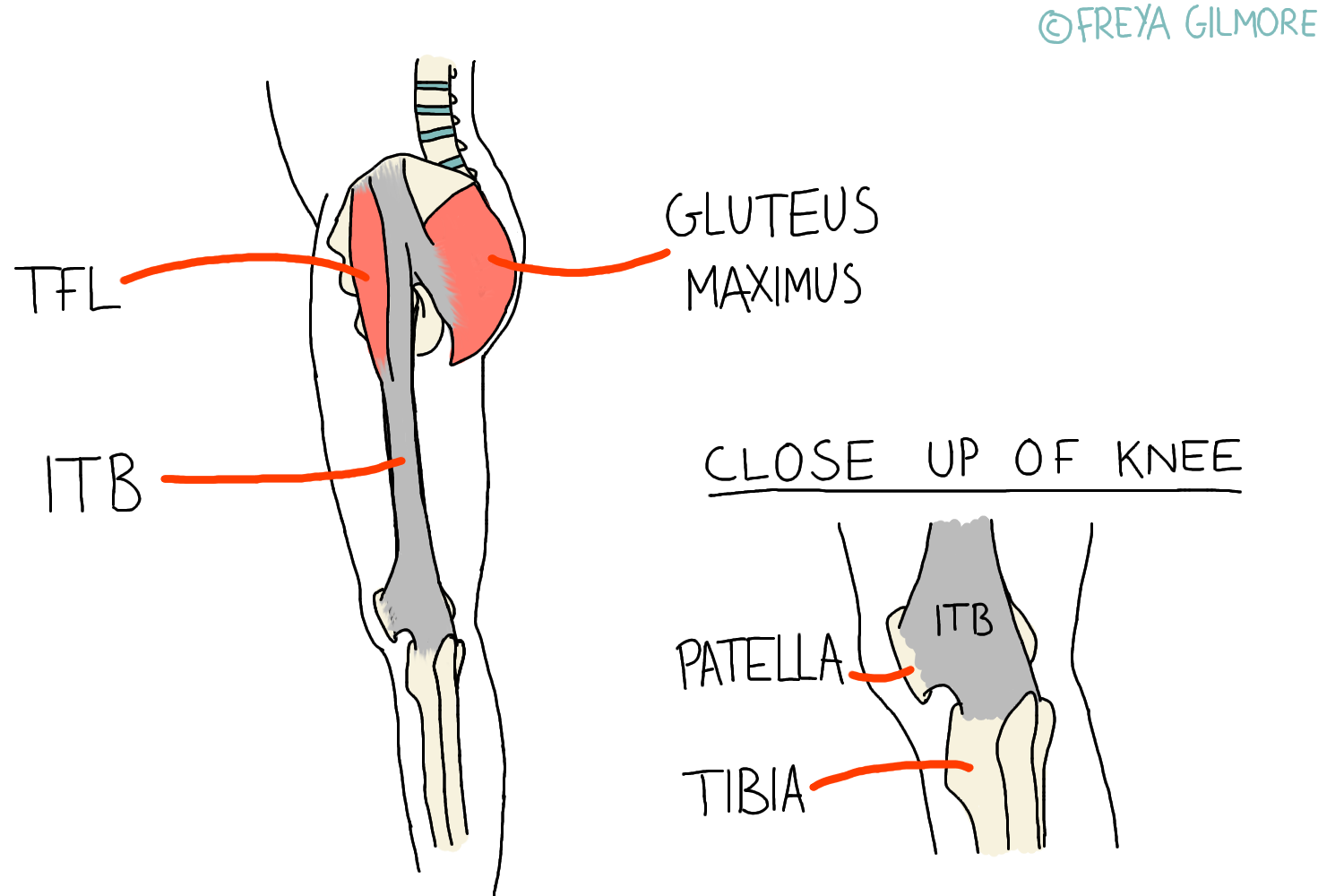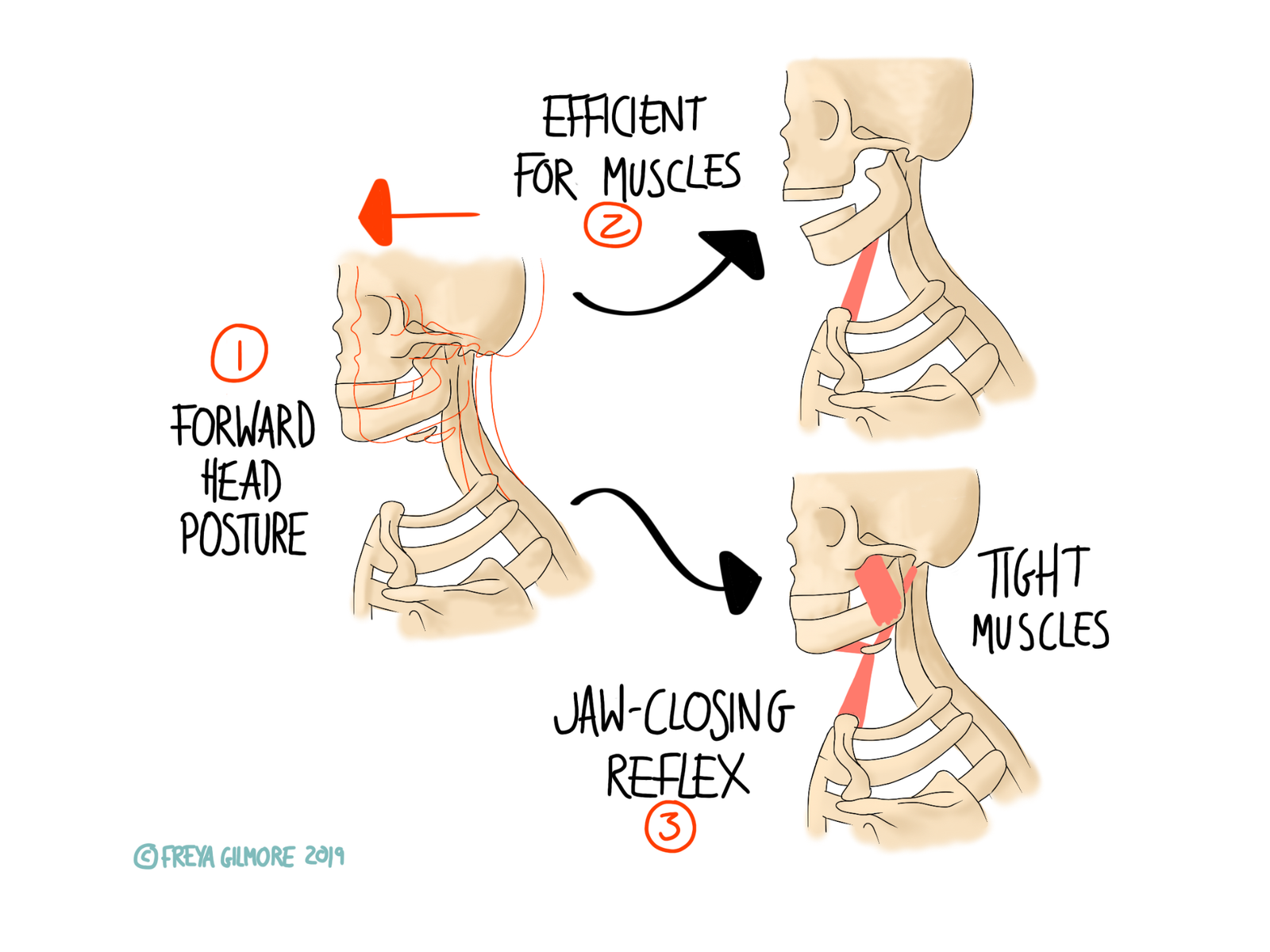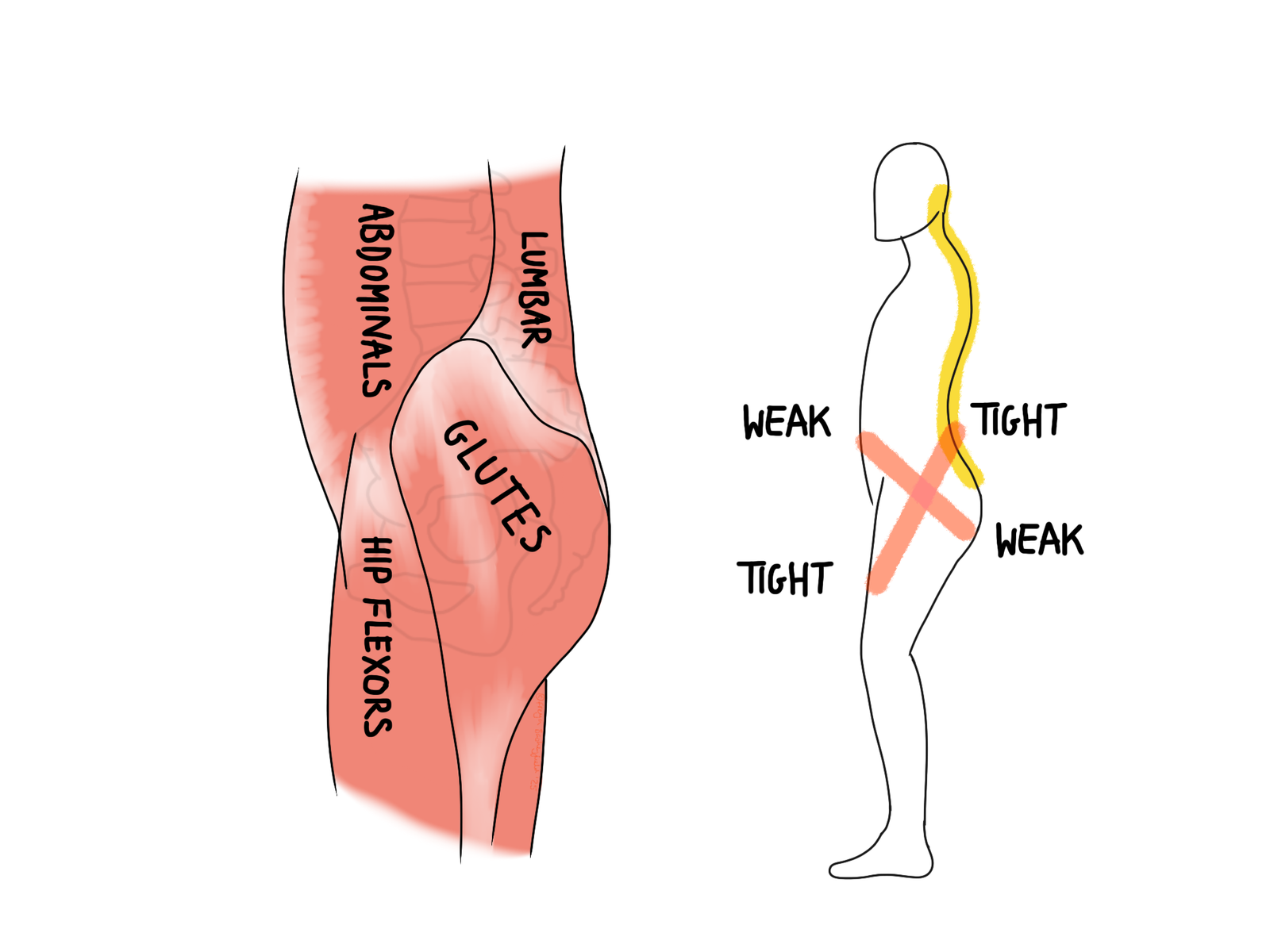The IT band is a band of tissue that runs down the side of the…
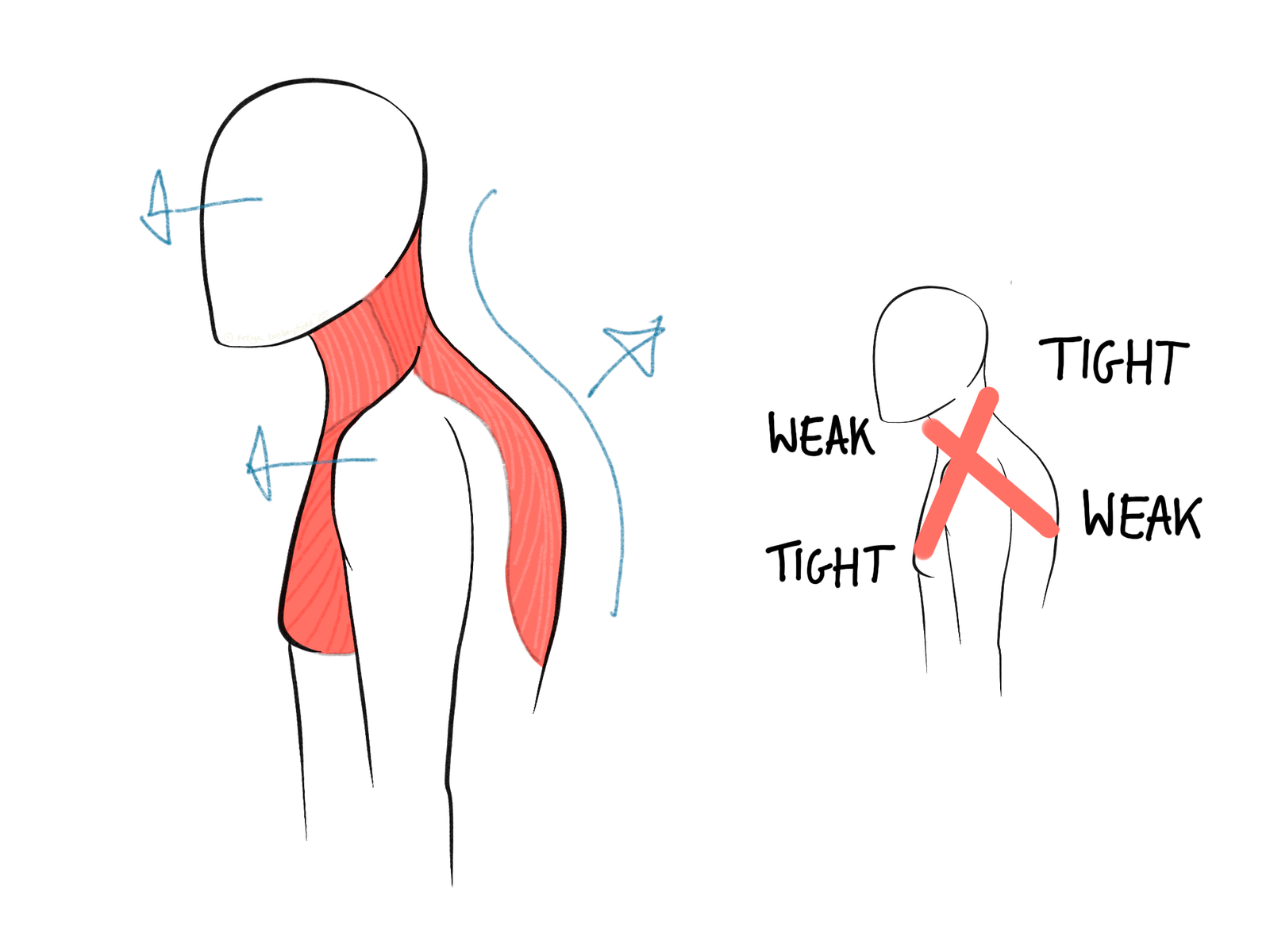
Upper Cross Syndrome
Upper Cross Syndrome describes a common muscular imbalance that develops around the shoulders and neck. Much like Lower Cross Syndrome in the pelvis and lower back, it forms a cross-shaped pattern of tight and weak muscles. The result is a forward head posture, rounded shoulders, and often a more hunched (kyphotic) upper back.
The Muscular Pattern
The cross shape of tension and weakness can be summarised as:
- Tension in the chest muscles and upper back
- Weakness in the front of the neck and mid back
Over time, the imbalance encourages the head to drift forward, putting extra strain on the neck and upper back. Because this stretch encourages the mouth to hang open (and instinctively we work against this), it can lead to further tension in the jaw. If you notice clicking in your jaw or headaches developing in the side of the head, it might even relate back to upper cross syndrome.
Symptoms of Upper Cross Syndrome
The textbook symptoms include:
- an ache across the tops of the shoulders
- awareness that the shoulders are held higher than normal
- upper back stiffness, which may be accompanied by pain
- headaches radiating from the neck
There may also be some tingling or discomfort into the arms if a nerve is irritated by the tension and postural changes. It can be helpful to keep note of when your symptoms change. Often upper cross syndrome symptoms are aggravated by prolonged sitting, whether at a desk, in a car, or even sitting in an awkward position to read a book.
How It Links to Lower Cross Syndrome
Postural problems don’t usually occur in isolation. Many patients with Upper Cross Syndrome also show features of Lower Cross Syndrome, where weakness in the core and glutes and tightness in the hip flexors exaggerates the curve in the lower back. When the head drifts forward and the pelvis tips forward at the same time, the body adopts a stronger “S-shaped” posture that puts strain throughout the spine.
Treatment and Management
Your osteopath will aim to:
- release tight chest and shoulder muscles
- mobilise stiff segments in the upper back
- strengthen weaker postural muscles through targeted exercise
- provide ergonomic advice for your desk, driving, or home set-up
It can take time to break the cycle, so stick to your prescribed exercises for best results. You may need a combination of stretches and strengthening exercises to restore the balance in muscle tension, and your osteopath will check in at each appointment to see if anything needs changing. If there are any lifestyle factors feeding into things, like desk or car ergonomics, we can offer advice for better positioning and ideas for keeping moving during your day. Remember that you’ll be better off cycling through a lot of “bad” desk postures than sticking to the “perfect” one for hours without moving. Even better, if you can break up your work day with your exercises, you’ll be putting yourself in the best stead for a speedy recovery.
Book an appointment for your Upper Cross Syndrome in Camberley here.
